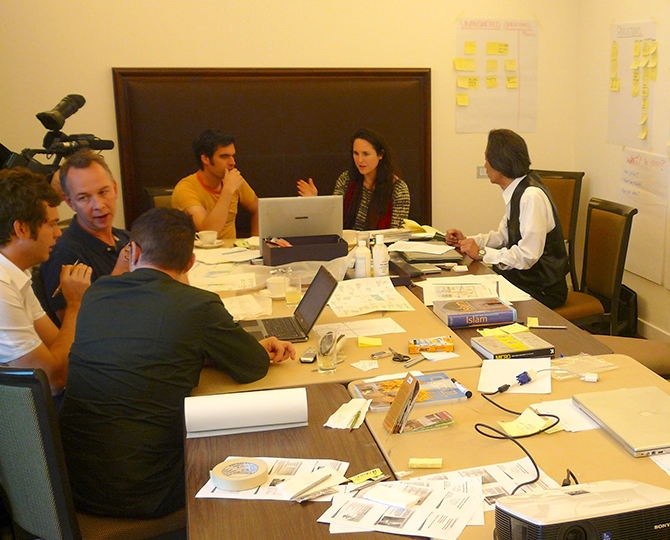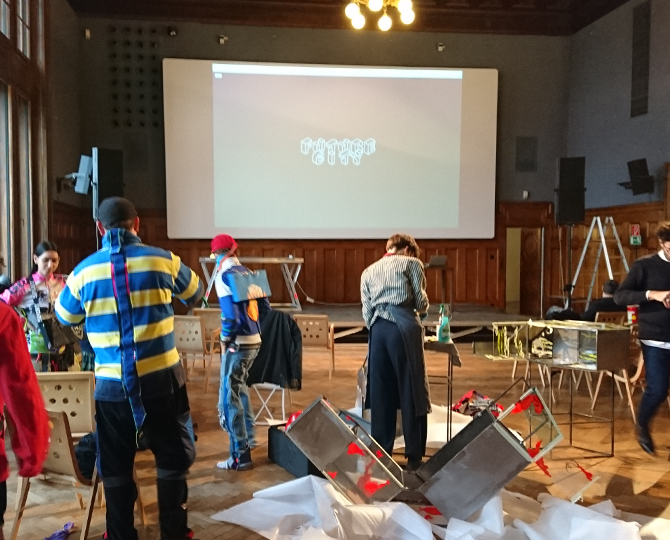Magazine
Design incorporates objects, people,
ideas based on the small pleasures of everyday life.
Meet your wonderful design world with the DDP Design Fair.


Design support for the 21st century: Design Collaboration Part 1
From hand-holding to startup financing
Mario Gagliardi is principal of Mario Gagliardi Design, https://mariogagliardi.com
He was chief designer at LG Household and Health Care and consultant for KIDP, Samsung IDS, and the Austrian Ministry of Science. He was CEO at Qatar Foundation and taught as professor at Hongik IDAS and Aalborg University.
The history of design support until today has two distinct phases: project hand-holding and startup financing. From the nineteen-eighties until around the 2000’s, the economy revolved around industrial production, and a preferred model of design support was project hand-holding. In this model, a designer was brought together with a company for a project, and a part of the costs were financed. This worked well to raise awareness for design as a means to add value to companies. However, after the initial funding was completed, there was little follow-up, and the first project often remained the last.
Around the 2000’s, the overall financialization of the economy led to a new model: to directly finance start-up teams through state investment agencies or investment aggregators. After the early years of excitement, it turned out that some freshly financed startup companies were unable to deliver their envisioned project. The incentive to get high amounts of funding, coupled with demands to become profitable in a very short timeframe, led several startups to exaggerate their claims. Some projects turned out to be mainly speculative, and problems in startup teams included lack of design competence, lack of product development experience, and difficulties with production and logistics.
The hand-holding model suffered from a short-term focus and a lack of follow-up analysis, and short-term design jobs often suffer from a lack of engagement by designers. Also the startup model suffers from short-termism. In the startup model, companies are expected to quickly grow out of thin air: development, production, sales and logistics, all has to be built from scratch. The hand-holding model at least has the advantage that the wheel doesn't have to be reinvented: the company is already existing and has capabilities, and bringing designers in should add value.
In search of a new concept
After the industrialization of the eighties and the financialization of the 2000’s, a new, more considered concept to support companies and advance growth is needed. New laws to reduce harmful ecological impact demand better resource utilization and options for recycling, and a new generation of consumers demands new standards of corporate transparency and resource traceability.
SMEs thrive in specialized niches. There, design can help with creating innovative product and service concepts or with improving existing products, including ecological considerations and consumer trends.
Which SMEs are successful, and why? Italian design producers such as Artemide, Alessi, or Zanotta are driven by passion and a long-term commitment to design. They provide meaning, pride and security for family members and employees, and they cooperate with a range of designers for their collections. Similarly, excelling medium sized German companies such as Festo or Durst base their strength in their commitment to innovation and technical excellence. None of these organizations exist to reap short-term profits: Instead, they have a long-term focus, cultivate innovation and are driven by an untiring motivation to excel.
Design Collaboration
Already In the nineteen-sixties, car companies entered collaborations with designers, either because they lacked sufficient design capability, or the in-house team needed design inspiration. Designer Giorgetto Giugiaro created cars for Ferrari, Maserati, Alfa Romeo and others, while Giovanni Bertone designed cars for Lamborghini, Citroën, Fiat, Volvo and others. Design cooperations are also a successful model in fashion design: recent cooperations include Virgil Abloh for Off-White or Jil Sander for Uniglo.
Design Collaboration can be a highly effective support model for SMEs because it instantly adds design capacity and experience which would be time-consuming and costly to establish in-house. To make it work, a range of points have to be considered.
To be suitable for Design Collaboration, projects should have a shared vision and long-term development focus, keeping in mind that a new design offering can fundamentally improve the market position of a company. Design Collaboration is built on the premise that designers and companies treat each other as partners. To make sure of a good match between a designer and a company, a design audit looking at capabilities and motivation should be conducted. To maintain lasting motivation, designers should share risk and reward of product development by being remunerated through a percentage of revenues.
Design Collaboration is ideally supervised by a design promotion organization which acts as catalyst, principal supporter and consulting partner of companies and designers, helping with audit, analysis, and match-making.
Creative professionals are mostly educated to compete, but complex tasks can only be mastered through collaboration. A workshop bringing together specialists from architecture, design, engineering and resource management to create innovative concepts for sustainable communities in the Middle East, led by Mario Gagliardi
Future City Collaboration ©Mario Gagliardi Design.
| 이전글 | Meet CEO Mee Jeong, Lighting Curator of 2021 DDP Design Fair |
|---|---|
| 다음글 | Design Support for the 21st Century: Design Collaboration Part 2 |







